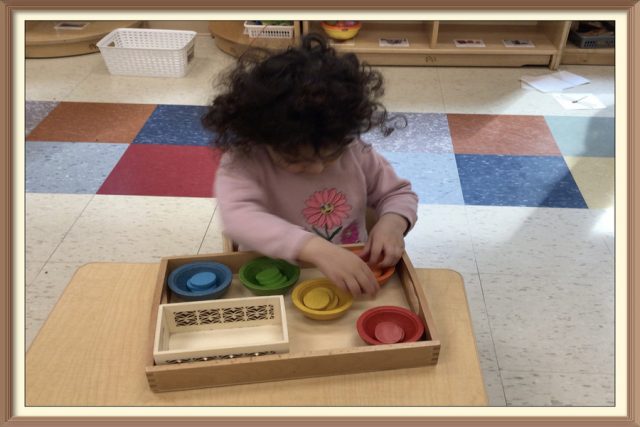
Description & Learning Objectives
Sorting is an activity that can be utilized to foster children’s development and skills, especially at an early age. It helps support a variety of cognitive skills as well as encourages fine motor and language skills. Sorting can be seen in many different ways, and can be as simple as putting the same colours together or as complex as grouping the same types of animals by habitat (e.g., those that live on a farm vs those that live in the jungle). The way we present sorting activities and how complex they are will be based on the interests and skill level of the child. Children will show a sense of pride and accomplishment once they are able to complete the activity and tend to do it repeatedly until they feel like they have mastered it.
Materials
- You can purchase items for sorting activities or use objects and materials around your home.
Observations & Findings
Sorting encourages children to use and develop their cognitive skills such as problem solving and matching. Sorting with young children can be as simple as matching the same colours & shapes together and can be based on their current interests and likes. As they become older, the sorting activity can be adapted and changed based on their skill level. As adults, sorting things into categories and matching things together comes naturally to us. This is because as children grow and have new experiences, they are constantly taking what they’ve previously learned and using it to apply to their daily lives. They begin to see and recognize patterns, and begin to put them into different categories as they continue to gather new information.
Sorting is also an activity that helps support fine motor and language skills. For example, when using a shape-sorter activity, children must use their hands and fingers to try and manipulate the shapes to fit into their coordinating hole. They may need to twist and turn their hand in order for the shapes to line-up and go in smoothly. Language skills are also encouraged through a teacher verbally labeling or naming what they see. As adults name things and characteristics of objects (e.g; “This is a blue ball and it has a bumpy texture” vs “This is a red ball and it has a smooth texture”), they are able to help children build their receptive language skills; helping them build and expand their vocabulary. As a result, children are able to build on their expressive language skills and not only name the object, but also begin to understand and use their own descriptive words and eventually sentences.


